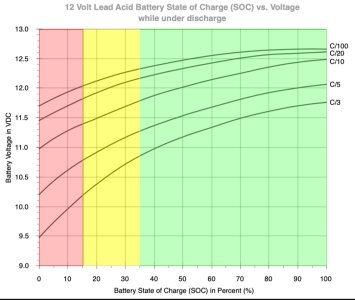Rhylsailer99
Active member
I have 2 leisure batteries 130ah each and I fitted a 20w solar panel to trickle charge one battery, then at a later date I fitted another 20w solar panel with a seperate controller. Both conttrollers are independant charging one battery each. Would it be better to have one larger panel with a dual output from the controller? I alao think the batteriea will need replacing next year, as the voltage drops to 11.6v when under load. I also have an issue the alternator not kicking in on a sunny day because of the solar volts. I also have a switch with 1,2,both for selecting which batteriy to use
I was thinking to uograde to 2x 120ah agm batteries next year, and a bigher pabel, as looking to get a small fridge.
My 2 current silar controllers are the very cheap chinese ones
I was thinking to uograde to 2x 120ah agm batteries next year, and a bigher pabel, as looking to get a small fridge.
My 2 current silar controllers are the very cheap chinese ones

